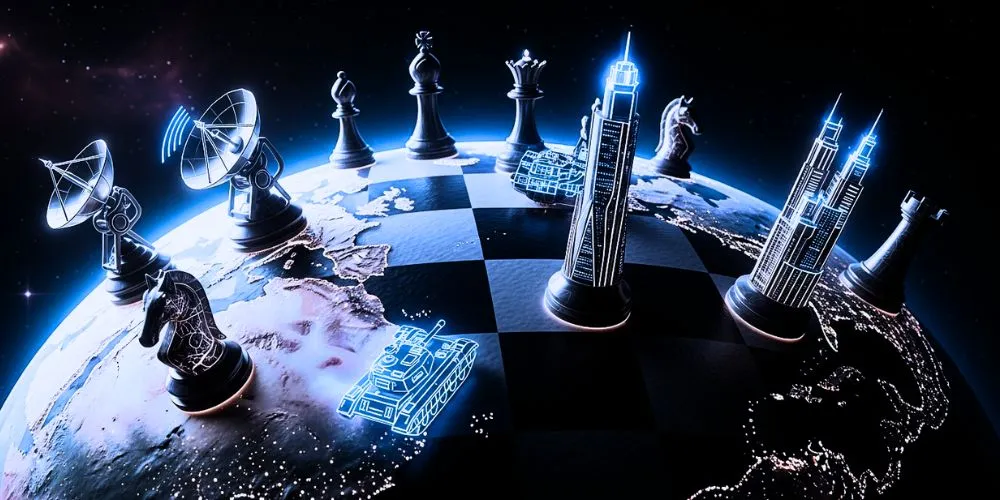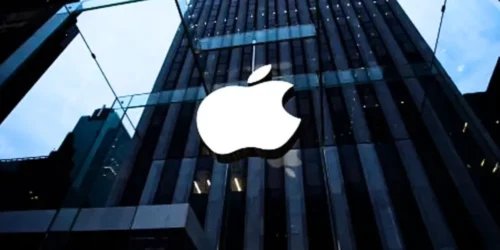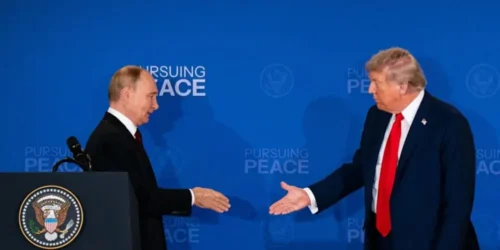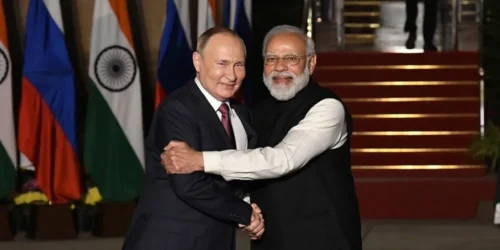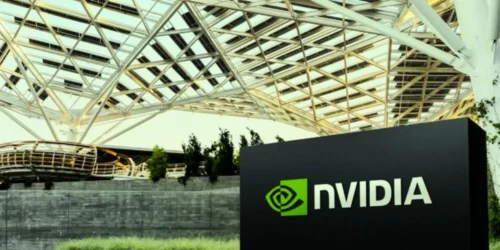The great ideological struggles had ended, and a liberal, rules-based international order would guide humanity toward a future of shared prosperity. That optimism now feels like a distant memory. Today, the board is being reset. Great power competition has returned with a vengeance, nationalism is resurgent, and the map of global influence is being actively redrawn. We have entered a new, uncertain era where geography, resources, and military might are once again the central currencies of power. This analysis examines the key drivers of this new geopolitical landscape, the critical flashpoints of competition, and the strategies nations are deploying in this 21st-century version of the Great Game.
The End of the Unipolar Moment
The era of uncontested American dominance that followed the collapse of the Soviet Union has come to a definitive end. The international system is transitioning into a more chaotic and competitive multipolar or bipolar state, fundamentally altering the global power balance.
The Rise of a Peer Competitor: China’s Strategic Ascent
China’s transformation from a regional power to a global superpower is one of the single most significant geopolitical developments of our time. This is not just an economic rise; it is a comprehensive, strategic push to reshape the international order in its favor. Through its massive Belt and Road Initiative (BRI), Beijing is creating a new network of trade and infrastructure centered on itself. It is rapidly modernizing its military to project power across the Indo-Pacific and beyond, and it is actively promoting its model of authoritarian state capitalism as a viable alternative to Western liberal democracy.
A Revanchist Russia: Disruptor on the World Stage
While lacking China’s economic might, Russia under Vladimir Putin has masterfully played a weaker hand to reassert itself as a major global player. It has pursued a revanchist foreign policy, seeking to restore its traditional sphere of influence in Eastern Europe, as evidenced by its actions in Georgia and the full-scale invasion of Ukraine. Russia has become a master of asymmetric warfare, employing cyberattacks, disinformation campaigns, and political interference to sow division and weaken Western democracies from within. It acts as a global spoiler, challenging the U.S.-led order wherever it can.
The New Battlegrounds of Global Competition
The competition between great powers is not being fought on a single front but across multiple domains. Control over strategic geography, critical resources, and the digital realm has become the new prize in this global contest.
The Indo-Pacific: The World’s New Center of Gravity
The geopolitical heart of the 21st century has shifted from the North Atlantic to the Indo-Pacific. This vast maritime region is home to the world’s most critical sea lanes, through which a huge portion of global trade passes. It is here that the ambitions of China, the interests of the United States and its allies, such as Japan and Australia, and the rise of regional powers like India all converge. Disputes over territories like the South China Sea and the status of Taiwan are not mere local conflicts; they are potential flashpoints for a great power war.
The Scramble for Critical Resources
The global transition to a green economy has triggered a new geopolitical scramble, not for oil, but for rare earth elements and critical minerals like lithium, cobalt, and nickel, which are essential for batteries, wind turbines, and other clean technologies. China currently dominates the mining and processing of these minerals, giving it immense leverage. This has sparked a global race among Western nations to secure their supply chains, leading to a new form of resource competition in Africa, Latin America, and even the deep seabed.
The Digital Domain: The Invisible Front Line
The battle for global influence is increasingly being fought in the digital realm. Control over the internet’s infrastructure—the fiber optic cables, 5G networks, and satellite constellations—is a major geopolitical prize. Nations are vying to set the standards for emerging technologies like Artificial Intelligence and quantum computing, knowing that whoever writes the rules will have a decisive advantage. This domain is also a battlefield for cyber espionage and warfare, where state and non-state actors can disrupt critical infrastructure or steal sensitive data with a degree of plausible deniability.
The Shifting Sands of Alliances and Alignments
In this new era, old alliances are being tested and new, more flexible alignments are forming. The clear ideological blocs of the Cold War have given way to a more fluid and transactional international environment.
The Strain on Traditional Alliances
Post-war alliances like NATO have been revitalized by Russian aggression in Ukraine, demonstrating their enduring value for collective defense. However, they also face internal strains. Debates over burden-sharing, divergent threat perceptions, and the rise of populist leaders who question the value of multilateral commitments have created fissures. The reliability of security guarantees is being questioned, forcing many nations to hedge their bets and reconsider their strategic autonomy.
The Rise of the “Middle Powers”
The growing competition between the U.S. and China has created an opportunity for influential “middle powers” like India, Brazil, Turkey, and Saudi Arabia to exert greater influence. These nations are increasingly unwilling to be drawn into a simple binary choice between Washington and Beijing. Instead, they pursue a multi-aligned foreign policy, strategically partnering with different powers on different issues to maximize their national interests. They have become the new “swing states” in the global balance of power.
The Power of Economic Blocs
Economic heft is being weaponized to create powerful geopolitical blocs. The European Union, for example, utilizes its vast single market to establish global regulatory standards, known as the “Brussels Effect.” It can dictate terms on data privacy, environmental standards, and competition policy that multinational corporations must adhere to globally. Similarly, trade pacts are designed to create closed economic ecosystems that strengthen ties between members while excluding and isolating rivals.
The Ideological Dimension of the New Cold War
While not as rigid as the struggle between communism and capitalism, the current geopolitical competition has a strong ideological undercurrent. It is a contest between two fundamentally different visions for how society and the international system should be organized.
Democracy vs. Authoritarianism 2.0
The central ideological struggle of our time pits the world’s democracies against a rising tide of authoritarianism. This is not just a theoretical debate. It is an active contest where China and Russia promote their models of state control and surveillance as more efficient and stable than the perceived chaos and gridlock of democratic societies. They offer these models, along with technology and financing, to other autocratic regimes, creating an informal alliance of nations opposed to the liberal international order.
The Weaponization of Information
A key front in this ideological struggle is the battle over information. Authoritarian states invest heavily in sophisticated propaganda and disinformation campaigns designed to erode trust in democratic institutions, amplify social divisions, and promote a narrative of Western decline. They flood social media with false stories, use state-controlled media to broadcast their worldview globally, and actively censor any information that challenges their authority. For democracies, countering this requires a renewed commitment to independent journalism, media literacy, and transparency.
Conclusion
The world has entered a turbulent and unpredictable era of geopolitics. The comforting certainties of the post-Cold War world are gone, replaced by a tense and competitive environment where the risk of miscalculation is high. This new Great Game is being played across multiple chessboards at once—from the depths of the ocean to the vastness of cyberspace. It is a contest of economic power, military strength, technological prowess, and ideological vision. Navigating this fractured landscape requires a clear-eyed realism, strategic agility, and a deep understanding that the decisions made today in Washington, Beijing, Moscow, and other global capitals will draw the map of the 21st century.

